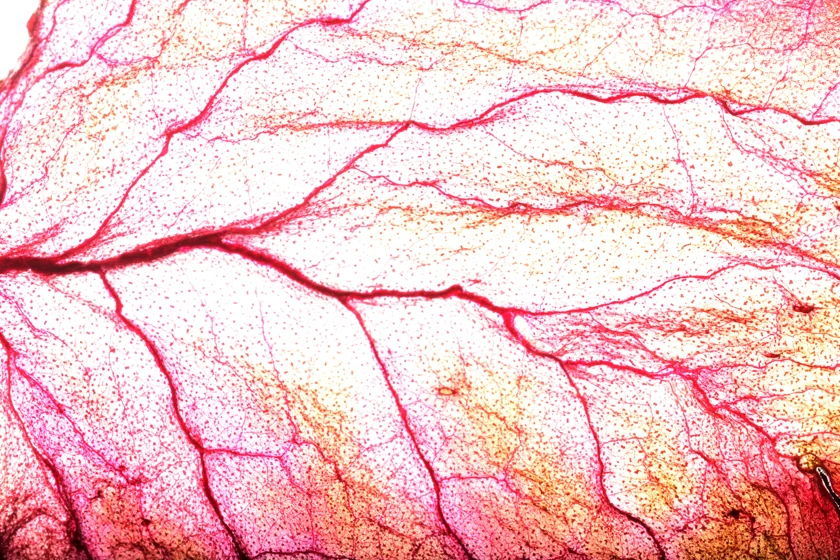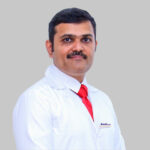
Understanding Varicose Veins and Vascular Health
Varicose veins, those bulging, twisted veins that often adorn our legs, may seem like a mere cosmetic nuisance. However, they signify a deeper story—one of vascular health and well-being. In India, where bustling city life and sedentary lifestyles are prevalent, the prevalence of varicose veins is striking.
Approximately 30% of adults in India grapple with varicose veins, making it imperative to delve into the intricacies of this condition and its implications for vascular health. With such staggering numbers, it is necessary for us to understand the meaning of varicose veins and vascular health to steer clear of any vascular issues.
So, without any further ado, let’s collectively embark on this journey towards better vascular health by deeply understanding the intricacies of varicose veins and vascular health.
Demystifying Varicose Veins: Causes, Symptoms, and Risk Factors
Let’s delve into the causes, symptoms, and risk factors associated with varicose veins to shed light on this prevalent condition.
Causes of Varicose Veins
Varicose veins develop when the valves within the veins weaken or fail to function properly, leading to blood pooling and vein enlargement. Several factors contribute to this process, including:
Genetics: Family history plays a significant role in the development of varicose veins. Individuals with a family history of varicose veins are more likely to develop them themselves.
Age: As we age, our veins may lose elasticity, causing them to stretch and weaken. This age-related degeneration can contribute to the development of varicose veins.
Gender: Women are more prone to varicose veins than men, primarily due to hormonal changes during pregnancy and menopause. Pregnancy increases the volume of blood in the body and puts pressure on the veins, while hormonal changes can affect vein elasticity.
Obesity: Excess weight places additional pressure on the veins, particularly those in the legs and feet. This increased pressure can weaken the vein walls and contribute to the development of varicose veins.
Occupation: Jobs that involve prolonged periods of standing or sitting can hinder blood circulation, leading to the development of varicose veins.
Symptoms of Varicose Veins
Varicose veins often present with the following symptoms:
Visible Veins: Varicose veins are characterized by their twisted, bulging appearance, typically visible beneath the skin’s surface. They may appear blue or purple in color.
Aching or Heaviness: Individuals with varicose veins may experience aching or heaviness in the affected limbs, particularly after prolonged periods of standing or sitting.
Swelling: Swelling, especially in the lower legs and ankles, is a common symptom of varicose veins. This swelling may worsen throughout the day and improve with leg elevation.
Discomfort: Some individuals with varicose veins may experience discomfort, throbbing, or a sensation of fullness in the affected area.
Skin Changes: Varicose veins can lead to changes in the skin, including dryness, itching, and discoloration. In severe cases, skin ulcers may develop near the affected veins.
Risk Factors for Varicose Veins
Several risk factors increase the likelihood of developing varicose veins:
Family History: As mentioned earlier, a family history of varicose veins increases an individual’s risk of developing them.
Age and Gender: Aging and female gender are significant risk factors for varicose veins.
Pregnancy: Hormonal changes and increased blood volume during pregnancy can contribute to the development of varicose veins.
Obesity: Excess weight places added pressure on the veins, increasing the risk of varicose veins.
Sedentary Lifestyle: Lack of physical activity can hinder blood circulation and contribute to the development of varicose veins.
The Link Between Varicose Veins and Overall Vascular Health
The link between varicose veins and overall vascular health is a significant one, encompassing both the visible manifestations of varicose veins and their broader implications for cardiovascular well-being. Recent studies have revealed a notable gender disparity in varicose vein prevalence, with 46.7% of females and 27.8% of males found to have varicose veins. This gender discrepancy underscores the importance of understanding varicose veins as not only a cosmetic concern but also a potential indicator of underlying vascular health issues that may affect individuals differently based on gender.
Varicose veins often signify underlying venous insufficiency, a condition in which the veins fail to efficiently return blood to the heart. This can lead to blood pooling in the veins, causing them to enlarge and become varicose. While varicose veins themselves may not always pose serious health risks, they can serve as visible markers of compromised venous function, which can have broader implications for vascular health.
Individuals with varicose veins, particularly females, are at an increased risk of developing complications such as deep vein thrombosis (DVT) and chronic venous insufficiency (CVI). DVT occurs when blood clots form in the deep veins of the body, potentially leading to life-threatening complications such as pulmonary embolism. CVI, on the other hand, can result in symptoms such as leg swelling, skin changes, and venous ulcers, significantly impacting individuals’ quality of life.
Moreover, emerging research suggests a potential association between varicose veins and arterial diseases such as atherosclerosis, which is characterized by the buildup of plaque in the arteries. While the exact nature of this association is still being studied, it highlights the interconnected nature of vascular health and the importance of considering varicose veins in the broader context of cardiovascular wellness.
FAQs about Vascular Health and Varicose Veins
Varicose veins are enlarged, twisted veins that usually appear on the legs and feet. They occur when the valves in the veins weaken or fail, leading to blood pooling and vein enlargement. Varicose veins are a manifestation of venous insufficiency, a condition where the veins have difficulty returning blood to the heart, affecting overall vascular health.
While varicose veins are often considered a cosmetic concern due to their appearance, they can also indicate underlying vascular problems. Varicose veins are a visible sign of venous insufficiency, which can lead to complications such as chronic venous insufficiency, blood clots, and skin ulcers if left untreated.
Several factors increase the risk of developing varicose veins, including genetics, age, gender (women are more prone), obesity, pregnancy, and occupations that involve prolonged standing or sitting. These risk factors can impact vascular health by weakening vein valves and hindering proper blood circulation.
Yes, untreated varicose veins can lead to serious vascular complications. They can increase the risk of developing blood clots, such as deep vein thrombosis (DVT), which can be life-threatening if a clot travels to the lungs (pulmonary embolism). Varicose veins can also lead to chronic venous insufficiency, skin changes, and venous ulcers, affecting overall vascular health.
Maintaining good vascular health involves adopting a healthy lifestyle, including regular exercise, maintaining a healthy weight, elevating your legs when resting, avoiding prolonged sitting or standing, wearing compression stockings if recommended, and avoiding tight clothing that restricts blood flow. These practices can help prevent varicose veins and promote overall vascular health.
Conclusion
In conclusion, the link between varicose veins and overall vascular health is undeniable, with recent studies revealing a notable gender disparity in varicose vein prevalence. Varicose veins serve as visible markers of underlying venous insufficiency, which can lead to complications such as deep vein thrombosis (DVT), chronic venous insufficiency (CVI), and potentially arterial diseases like atherosclerosis. The higher prevalence of varicose veins among females underscores the importance of gender-specific considerations in addressing vascular health disparities.
As we navigate the complexities of varicose veins and their implications for cardiovascular well-being, it is essential to recognize the expertise of leading vascular surgeons like Dr. Sumit Kapadia in Vadodara. With specialized knowledge and advanced treatment modalities, Dr. Kapadia offers tailored interventions to address varicose veins and promote vascular health.
I urge readers to prioritize their vascular well-being and seek medical help if necessary. Whether it’s addressing varicose veins, managing venous insufficiency, or preventing complications like DVT, consulting with a qualified vascular surgeon is crucial. By taking proactive steps towards vascular health and seeking timely medical intervention, individuals can enhance their quality of life and safeguard their overall well-being.
Take the first step towards healthier veins and improved vascular health by scheduling a consultation with Dr. Sumit Kapadia today. Your vascular wellness matters and expert guidance can make all the difference.

MBBS, MS, MRCS, DNB-Fellow
Dr. Sumit Kapadia
Dr. Sumit Kapadia / MR KAPADIA SUMIT a gold-medalist from Baroda Medical College, obtained his general surgical training and senior residency from SSG Hospital, Vadodara.

MBBS, MS, MRCS, DNB-Fellow
Dr. Sumit Kapadia
Dr. Sumit Kapadia / MR KAPADIA SUMIT a gold-medalist from Baroda Medical College, obtained his general surgical training and senior residency from SSG Hospital, Vadodara.



